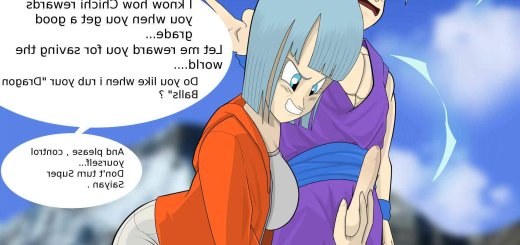The lost canvas vf stream


















Seinto Seiya: The Lost Canvas – Meio Shinwa: With Tetsuya Kakihara, Aya Hirano, Arnie Pantoja, Kenta Miyake. Story of the Holy War taking place in the 18th century, 250 years before the original Saint Seiya series. It centers on the fight between Tenma, one of the 88 Saints following Athena, and Alone, the reincarnation of the God Hades.
It is said that the painting that covers the sky, "The Lost Canvas", will kill all mankind. Tenma realizes the meek Alone wants to destroy humanity.
Pandora locks Alone in his studio so he can concentrate on his masterpiece, the "Lost Canvas", to fully awaken King Hades.
During the war, the Saints and the Specters face off. Tenma and Sasha have to deal with Alone who starts making the “Lost Canvas”, a vast painting of the earth, in the sky, so that after he finishes it, the entire world will die. With Alone still not being fully controlled by the soul of Hades, Pandora, alongside Hypnos and his brother Thanatos lead the Specters. However, as the two Gods are sealed by the former Saints Pope Sage and his twin brother Altar Hakurei, Alone invites the few remaining Saints to the Demonic Temples located in the Lost Canvas. Once the Saints go through the Temples, it is revealed that Alone is not possessed by Hades and is instead using the god’s powers for his own motives. Additionally, Tenma’s parents,
Following several battles in the Temples, Tenma faces Alone one-on-one with the former managing to defeat the latter, causing the Lost Canvas’ destruction. Shortly afterwards, Alone is possessed by Hades who aims to kill Athena. Hades is forced by the souls from the deceased Saints to escape to the last Demonic Temple, and Tenma, Sasha, and Alone decide to follow him. The three manage to defeat Hades but they never return to Earth. The two surviving Saints,
Jerry distracted himself by focusing on his latest project: transforming Liberty’s fledgling distance-learning program into a profitable online university. Starting in the 1970s, Falwell’s church sold VHS tapes of sermons and Bible study courses to Christians all over the world. Jerry realized that the proliferation of high-speed internet would make it possible for Liberty to stream college courses to students anywhere. In 2018 former employees
The story of an affair is a competition of narratives. Sometimes facts overlap, but just as often they diverge. It all depends on who’s doing the retelling. In media interviews, Giancarlo Granda said he first had sex with Becki—while Jerry watched—the day they met at the Fontainebleau hotel pool in Miami Beach in March 2012. It was the beginning, Granda has said, of a seven-year psychodrama that culminated in Jerry’s resignation. In early January, when I sought out Granda with a list of fact-checking queries for this story and the opportunity to present his version of events, he made clear that his differed significantly from the Falwells’. “Ha ha, oh man it’s an alternate reality in that email list,” he responded, denying their claims throughout but declining to comment further, saying he had a book deal with Harper Collins and a forthcoming streaming documentary to promote. “I can assure you that everything will be answered in the book and Hulu documentary,” he texted me.
Now, well before this point, you might have wondered why Jerry and Becki would buy a seedy hostel with a pool attendant they had known for only a few months. Granda said it was because they were a throuple. (Again, the Falwells deny this.) But take the sex out and it still shows questionable business sense on Jerry’s part to invest millions in an idea hatched by a college kid. One explanation for this catastrophic error in judgment is that Jerry and Becki didn’t have many close friends who weren’t ultrareligious. In Miami they were refugees from the evangelical world and were starting their social lives from scratch. Of course, having an affair and doing business with a pool attendant the same age as their kids crossed all kinds of boundaries that should have been glaringly obvious to everyone involved. Becki said she simply lost control: “This new life was so different for me.”
But the green gold has become a dirty business—bad enough that Elon Musk has vowed to engineer cobalt out of his vehicles—with a small coterie of individuals and companies growing immensely wealthy from the DRC’s resources at scant benefit to ordinary Congolese people. In 2019, a U.S. human rights organization filed suit against Tesla, Apple, Dell, and other tech giants on behalf of the families of 14 children killed or injured mining in the DRC; the lawsuit was dismissed in November. Meanwhile, Gertler and dozens of companies linked to him are under U.S. sanctions for allegedly corrupt deals, while Glencore, the Swiss-based commodities giant and current majority owner and operator of KOV, faces ongoing investigations from the U.S. Department of Justice and the Commodities and Futures Trading Commission, as well as Britain’s Serious Fraud Office, Switzerland’s Office of the Attorney General, and the Netherlands Public Prosecution Service. The U.S. Treasury used an NGO’s calculations that indicated Gertler was responsible for stiffing the DRC on more than $1.3 billion in lost revenue between 2010 and 2012 alone. Although Gertler found brief reprieve in the final days of the Trump administration, courtesy of Steven Mnuchin, Biden administration officials swiftly reimposed sanctions. As a result, Gertler, who is Israeli, is prohibited from using U.S. financial institutions and is largely barred from the international banking system. One of his lobbyists, Trump impeachment lawyer Alan Dershowitz, has insisted that Gertler has complied with U.S. and international law. But
Works from 1970 to 1983 are marked by his exploration of abstract expressionists such as Jackson Pollock, Mark Rothko, Barnett Newman and Jasper Johns and the pure abstraction and geometry of Mondrian and Malevich. Houle brings an older Indigenous abstract tradition to this history and, in the meeting of the two, he emerges as a new voice in modern abstraction that values immediacy, gesture, the spiritual qualities of colour, piercing the canvas with organic materials, Anishinaabe geometry and Indigenous sacred belongings.
Canada’s current, points-based immigration system, in place since 1967, attempts to provide a non-discriminatory framework for assessing individuals and collectives and directing them to strategic economic and geographic sectors. Once inside Canada, new immigrants are expected to boost the country’s economy by producing more for less. The system has little regard for existing marginalized communities, as it continues to reinforce “Canadian values” with an ever-growing intake of immigrants, whose admittance is driven primarily by the economic demands of the country. For all these reasons, the exhibition asks: What else is lost when human potential is measured as units of capital?





























